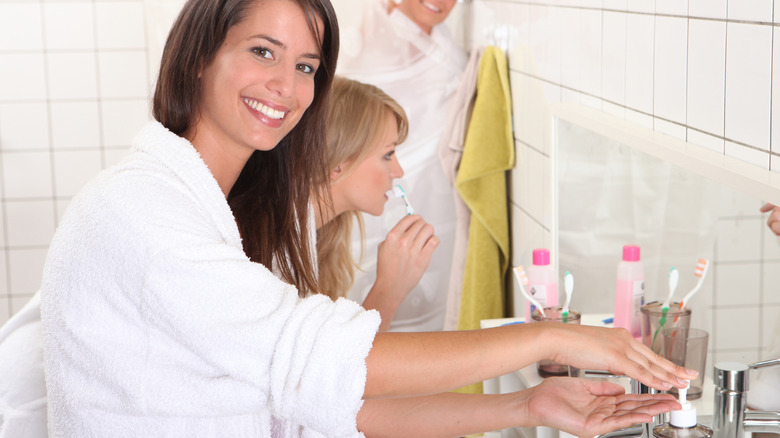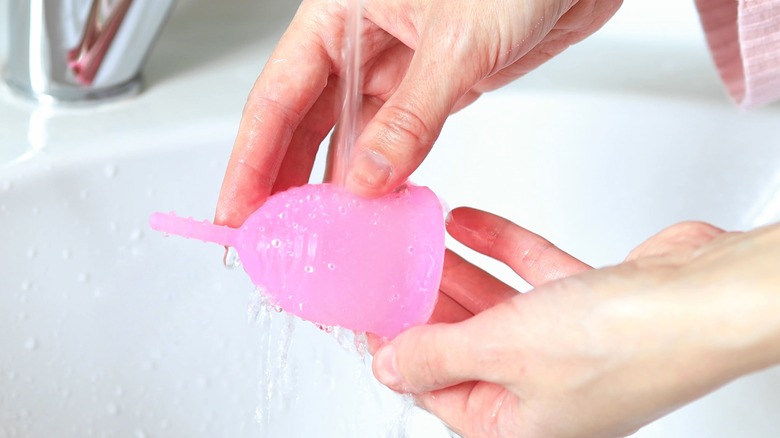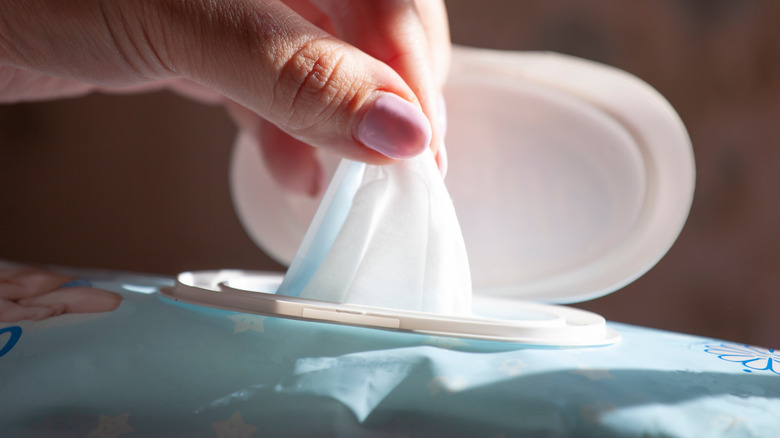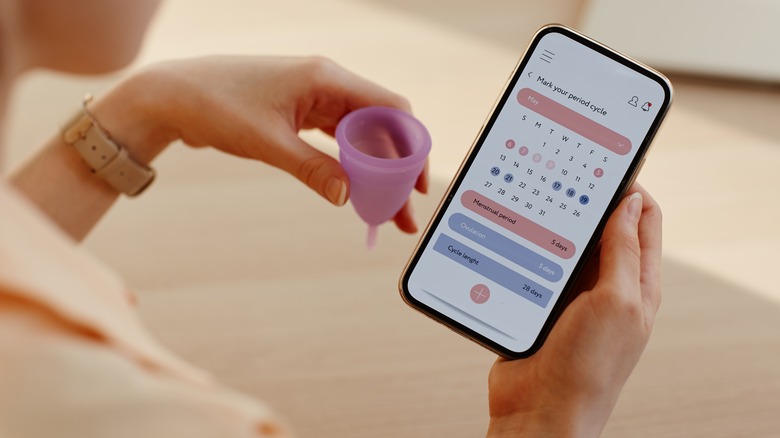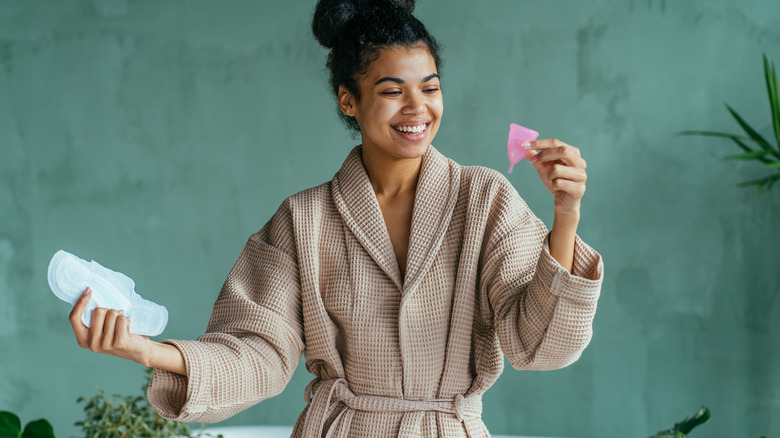Menstrual Cups & Shared Living Spaces: Tackling Period Hygiene In A Communal Environment
Living in a shared space, be it a private apartment or a dorm, has a lot of perks. It helps you reduce the cost of rent, offers a greater sense of community and security, and gives you access to shared amenities and resources. However, shared living spaces also come with certain drawbacks, and the biggest is probably a lack of privacy. Even if you have a bedroom all to yourself, having to share the kitchen, the living room, and the bathroom with others can feel inconvenient and nerve-wracking at times — especially at that time of the month.
Having your period when co-living is not always an easy experience. It can be even more uncomfortable if you use a communal bathroom and you're supposed to clean your used menstrual cup when your flatmates are there. While it's a perfectly normal matter of personal hygiene, and it's not the same as leaving your used tampon or pad out in the open, it can make you and the witness feel uneasy. A menstrual cup is still a feminine hygiene product for the body's most private part, and you're expected to be discreet about it. Not everyone is excited to see something freshly removed from another person's vagina. Here's how to be sensible about your menstrual cup when co-living.
How to clean a menstrual cup in a shared bathroom
When it comes to cleaning a menstrual cup in a communal bathroom, here is something you can learn from Jordan Sanders, via Put A Cup In It, who had the experience of washing her menstrual cups between uses in a dorm bathroom. When her cup was full, she would remove it, dump the content over the toilet, and wrap it in toilet paper. Sanders' dorm had private sinks, so she would carry the used cup back to her room to cleanse it with soap and water. A menstrual cup should be washed and wiped clean before re-inserting into the vagina.
As Sanders' period ended, she would bring a kettle of water to a boil, pour the water into a bowl mixed with antibacterial soap, and submerge the cup for a couple of hours. After boiling the cup, let it cool down completely before storing it in a clean, breathable pouch for next use. While that sounds like a lot of work, it will not take too much of your time. "Cups can be worn safely for eight to twelve hours, so as long as you're removing and washing them twice a day, that's the most important thing," menstrual cup educator Kim Rosas tells Cosmopolitan.
Must-have items to clean your menstrual cup with ease
If emptying a menstrual cup in a public restroom is routine for you, consider investing in menstrual cup wipes. Many menstrual cup wipes are designed to sanitize menstrual cups when you lack access to clean water or don't have time to give your feminine hygiene product a deep cleanse before re-insertion. That said, you should only use the wipes on rare occasions and try to clean your cup with soap and water whenever possible. Once you're done wiping, dispose of them appropriately.
Another way to quickly clean a menstrual cup is to invest in a pocket-sized, on-the-go menstrual cup sterilizer, which comes with a container and a lid. You can put the cup inside the container, fill it with water, seal the lid, and shake it to rinse the cup. For sterilizing, you can heat the container in the microwave or pour boiling water into it. You can store the cup in the sterilizer when you're not using it. This product is perfect for cleaning menstrual cups in shared bathrooms or when traveling.
If you're extra cautious about your vulva health, invest in a microwave sterilization bag. After washing your cup with soap and cold water, steam it in a portable microwave sterilization bag to destroy bacteria and ensure it's sterile.
Cleaning solutions to use with menstrual cups
As far as cup washing goes, you can use any cleaning solution dedicated to menstrual cups (there are many of them), or you can simply use a mild, scent-free, water-based soap. Oil-based solutions can alter the natural qualities of the medical silicone used to make your cup and make it softer, which can accelerate the deterioration of the product. Fragranced solutions, dishwashing soap, bleach, baking soda, rubbing alcohol, and antibacterial soaps are other cleaning agents not meant to be used internally.
Cold water can prevent stains from settling into the silicone, so you might want to rinse your cup first in cold water, followed by a second wash in warm water. While cleansing, thoroughly clean all the air holes and the rim of the cup to remove all residues.
Many people question whether they could wash their menstrual cups in a dishwasher for optimum disinfection. The answer is no. "Remember, you don't want to put anything on your menstrual cup that may then irritate your vagina," ob-gyn Nicole Sparks tells Popsugar. Not to mention, the prolonged high heat and water pressure in a dishwasher can be too rough for your menstrual cup and cause it to break down over time.
Period panties might be a good alternative
If washing menstrual cups in a shared bathroom is too overwhelming, see if you can use period panties instead. Like menstrual cups, period underwear is also leak-proof and helpful in reducing period waste.
Period underwear uses absorbent material like microfiber polyester that absorbs fluid with minimal runoff to keep you dry without being noticeable or uncomfortable. "Menstrual underwear can be used as a stand-alone menstrual product or in combination with others for confidence as it pertains to fear of leakage," gynecologist Alyssa Dweck tells Healthnews. A pair of period panties can hold anywhere from one to five tampons' worth of blood, ob-gyn Dr. Sam Rahman notes. Depending on your flow, you can usually buy light, medium, or high-absorbency period panties.
Change your period undies every 12 hours to keep yourself clean and odor-free. You'll want to stain-treat your used underwear with a specialized detergent first and run a cool tap over it before throwing it into your washing machine with other dirty laundry.
